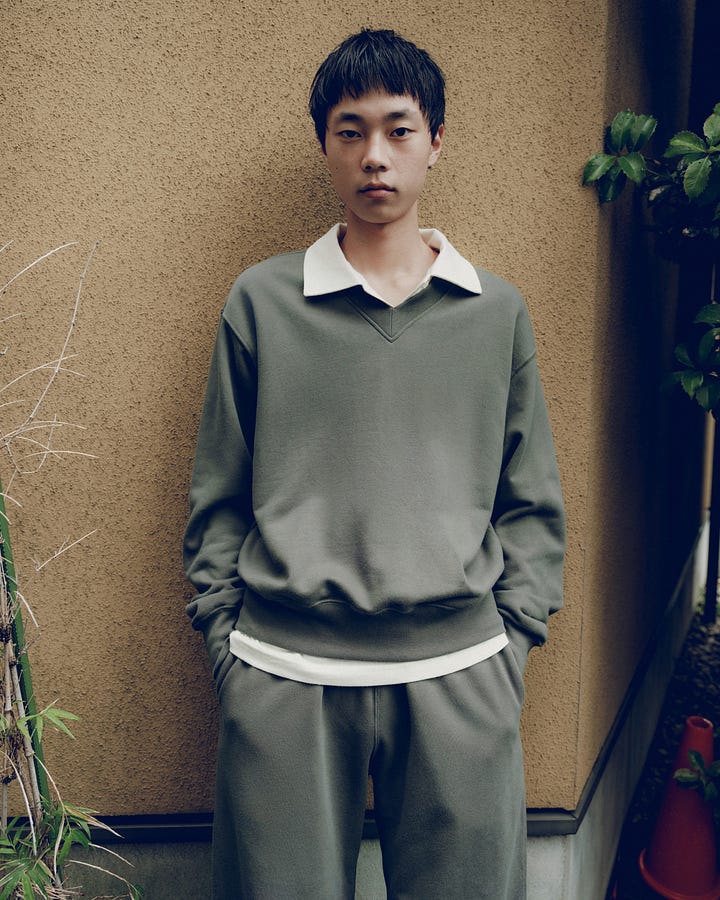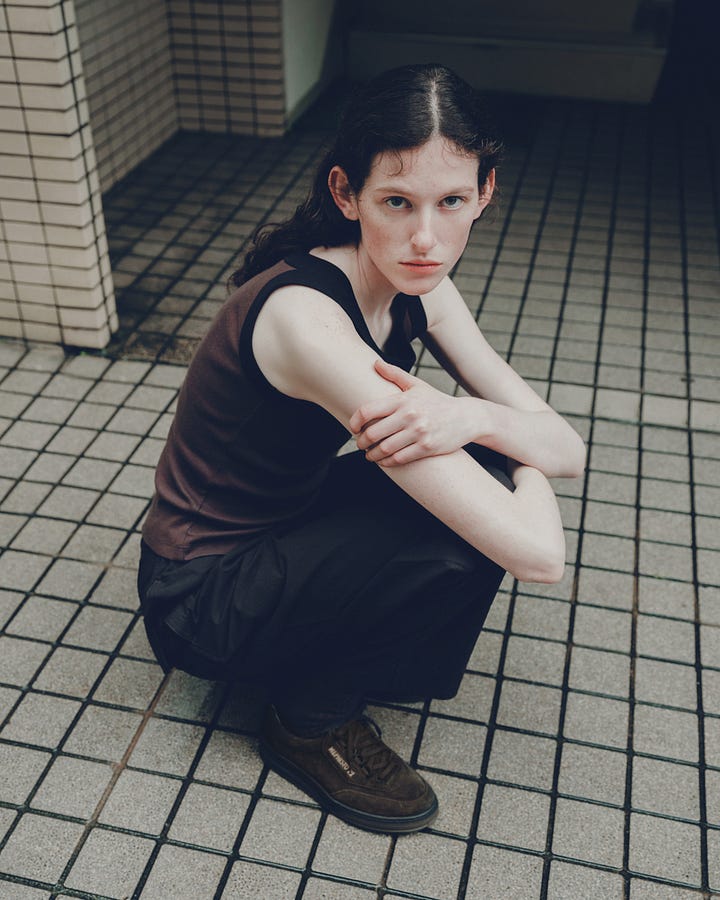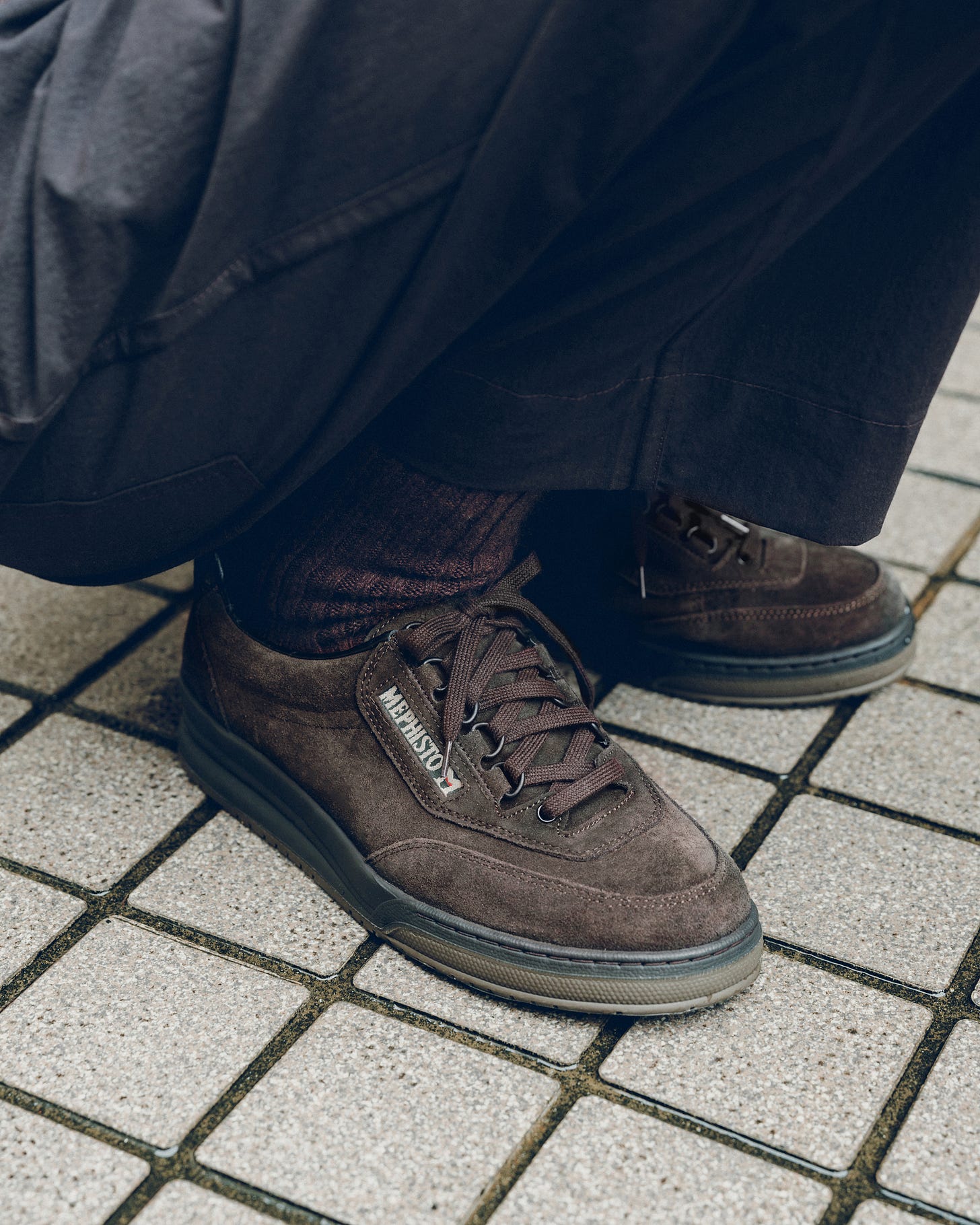Post-Mephisto Future
A chat with Body of Work
Is the future unknowable? Well, that depends. It depends on what you imagine the future to be. If you think of the future as being totally disconnected from the present, then — yes — it’s pretty unknowable. But suppose you believe that the future is made in the present, that it’s prospectively realized or prevented from happening in the here and now. Suddenly, it becomes much more knowable. To know a particular future now means to know what’s at stake in acting upon it.

We’re all future-makers, whether we like it or not. (It’s another question, of course, whether all futures we are making are livable.) And we’re all future literates, to a certain extent, able to “recognize that dominant futures are constructed, that they can be replaced, and that alternative futures are always waiting to be born.” This needn’t be a heavy existential burden, as some sociologists like us to believe. It can also be a way of looking at fashion, as I’ve brought myself to believe.
Most conversations about the future of fashion feel misguided. That’s not necessarily because they’re wrong. It’s because they’re premised on a specific, slightly dystopian vision of the future. They take a dominant aspect of the present — AI, meta-verses — exaggerate it, and project it onto a distant future that’s neither appealing nor, for some reason, avoidable. It makes much more sense to look at what kind of futures are actually there in fashion’s present, toppling the self-evidence of the highly visible ones and unearthing those existing beneath the surface.
The future of fashion’s present isn’t great news for everyone. And that’s great news for the rest of us. A focus on good clothes, on the quality of garments, rather than marketing, and on loyal followings rather than celebrity ambassadors is one thing. A strong sense of reality and presence — of creating this thing right here, right now — is another. And then there’s the power of constraint — of creating from a specific place, without access to boundless resources — in combination with a recognition of global specificity — of sourcing cotton from Japan, wool from Iceland, and cashmere from Italy.
No wonder, perhaps, that a disproportionate quantity of interesting brands exist and operate in fashion’s periphery. (Some not even travel to Paris this week — shout out to them!) The Netherlands is a case in point, and so is Canada, more specifically Toronto. This city’s home to Bexhill Court, Henry’s, Rosa Rugosa and to Body of Work, among others. Founded in 2020 by Dwayne Vatcher and Brittney MacKinnon, Body of Work is a small design studio, specializing in unisex artisanal sportswear, that recently rose to some online fame thanks to their collaboration with the master shoemakers from Mephisto.
A high-end walking shoe, the ‘Match’ is handcrafted in Sarrebourg, northwest France, from Italian suede in the brand’s signature ‘Loam Brown’. Like the rest of the AW25 collection, the picture of it circulating everywhere right now was shot in Tokyo by Ian Lanterman, whom Dwayne and Brittney met in Vancouver — incidentally also the photographer behind much of Neighbour’s incredible visual identity.
I reached out to Dwayne and Brittney, interested to hear about their post-’Match’ experiences as well as the process that led up to it and their plans for what’s next for the brand.
They’re on their way to Paris now, where they’ll meet with people from a few shops and showrooms that have expressed a desire to work with them. A more formal presentation at Paris will happen before too long. For now, Dwayne and Brittney — who both have a background in fashion, he at a company working with wings + horns and Reigning Champ, she at Canada Goose — are dedicating “as much of our time and energy to refining our design and production process,” which takes place entirely in Canada.




First things first: the Mephisto collaboration, how did that come to be?
My partner, Brittney and I deeply enjoy collaborative processes. We spend the majority of our time developing our bespoke knit fabrics and garments here in Toronto. When it comes to collaborations we are enthused to explore and expand outside of our current capabilities.
I had been wearing my pair of Matches into the ground and when the time came to purchase another pair, we simply thought about what updates we would want to make if we were designing a pair for ourselves.
Body of Work is just Brittney and I, and we work at a pretty small scale so we have to be particularly deliberate about what projects we would like to pursue. We were drawn to Mephisto because of our similarities: an understated perspective with a focus on quality. They have the capability to do small batch production in their facilities in Sarrebourg, and this resonated with us as our products are made within an hour of where we live. In speaking with their team, we were very pleased to feel their genuine enthusiasm about the perspective and attention to detail we brought.
And what did the collaborative process with Mephisto look like?
All of our products are very personal so we had a fairly clear idea of what we wanted to do from the start. We enjoy working with Italian leathers, particularly suede, in our signature ‘Loam Brown’, due to how well it wears over time. We also wanted to make the shoe our own from a branding perspective in a way that felt authentic to us. We prefer minimal branding, which led us to exploring the idea of embossing our logo on the tongue in place of the traditional Mephisto label. It’s a subtle change but it had not been done before which we found intriguing. There was a lot of back and forth in regards to the finer details but surprisingly, we were able to go into production based off of the very first sample.


